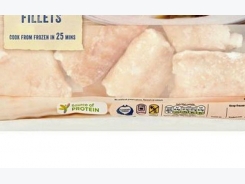US soybean farmers aim for sustainability in aquaculture feed

Farmers looking to cut environmental impacts to make soy fish feed even more sustainable.
Replacing fish feed with soy feed isn't a new concept -- there are 15.5 million metric tons of soy used in fish farming, according to Andy Tauer of the Soy Aquaculture Alliance -- but lately, the US Soybean Export Council (USSEC) and other similar organizations are pushing to ensure that fish farmers who are using soy can be assured that it is indeed a more sustainable alternative.
At the USSEC Aquaculture Investment Workshop this week in Panama City, the council's Will McNair said an ever-growing consumer expectation of sustainable products -- 75 percent of Fortune's Global 500 companies publish sustainability reports, for example -- is pushing the US soybean industry to also get on board.
Just this week, USSEC announced that the US Soybean Sustainability Assurance Protocol (SSAP) was given the thumbs-up by the Global Aquaculture Alliance's (GAA) Best Aquaculture Practices (BAP).
SSAP, a third-party sustainability certification, can help fish farmers "meet consumers' growing sustainability demands," McNair said.
In the past three and a half decades, there's been a massive reduction in resource impacts to produce soybeans in the United States, he said. From 1980 to 2011, there's been a 35 percent decrease in land acres used to produce soybeans, a 66 percent decrease in soil erosion in tons, a 42 percent decrease in irrigation water applied and a 49 percent decrease in greenhouse gases used in pounds. In contrast, there's been a 55 percent increase in crop yields.
US soybean farmers are aiming to cut their impacts even more in the coming decade, McNair explained.
Key soybean organizations have committed to reducing land impact by 10 percent, reduce soil erosion an additional 25 percent, increase energy use efficiency by 10 percent and decrease total greenhouse gas emissions by 10 percent.
Có thể bạn quan tâm
Phần mềm

Phối trộn thức ăn chăn nuôi

Pha dung dịch thủy canh

Định mức cho tôm ăn

Phối trộn phân bón NPK

Xác định tỷ lệ tôm sống

Chuyển đổi đơn vị phân bón

Xác định công suất sục khí

Chuyển đổi đơn vị tôm

Tính diện tích nhà kính

Tính thể tích ao hồ



 As prices fall, warmwater shrimp claims dominance on…
As prices fall, warmwater shrimp claims dominance on…  UK frozen seafood retail sales pick up for…
UK frozen seafood retail sales pick up for…